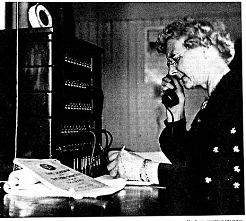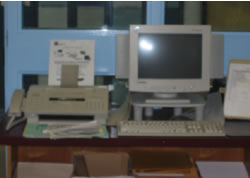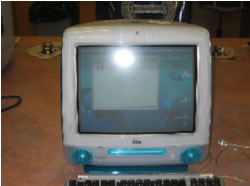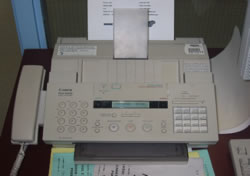
Home | Architecture | Communication | Education |
Fashion |
Government | Industry | Railroads
and Mines | Recreation | Religion |
Technology | Transportation | Our Roots Resources
Communication in the 1920's
by Natasha
The little Indian boy was sitting near a big frost heave when he saw a smoke
signal from the west. He knew that his mother wanted him to come home from
the hunt. He graciously took his kill and headed home. This is an example of
communication.
Communication can be anything from talking, to sign language, to writing,
or even smoke signals. Big valley had a newspaper called the BIG VALLEY NEWS,
which was their communication back then. The newspapers had classifieds on
the back and had 5 columns on each page. The inside was news from around the
world.
 The
most dramatic change in communication was in 1920 when the telephone came out.
The telephone was very important to Big Valley. After it came out people did
not have to walk to their neighbors house, they could just call over. The telephone
replaced the telegraph. The telegraph was a small object that you clicked and
sent messages to far away places like Drumheller and Stettler. They used codes
to send messages.
The
most dramatic change in communication was in 1920 when the telephone came out.
The telephone was very important to Big Valley. After it came out people did
not have to walk to their neighbors house, they could just call over. The telephone
replaced the telegraph. The telegraph was a small object that you clicked and
sent messages to far away places like Drumheller and Stettler. They used codes
to send messages.
With the telephone there was 87 rural subscribers and 57 town residents.
They had an extensive rural line that went 12 miles east of Big Valley. Telephones
in the 1920’s worked on the party line system. The party line system
was when if it was one ring it might have been my call, 2 rings and it was
Jim’s call, and so on. Maybe Jim heard it was my call and listened in
for fun. Big Valley’s first telephone operator was Mr. Ernie Erickson.
Today, when I think of communication, I think of the telephone, which is
way different now. Now, you just dial a number and only that number rings unlike
what it used to be.
Historic picture from McCarty, Tom. (1977, c1974). As
We Remember Big Valley. Big
Valley, Alta. : T. McCarty. p. 178
Communication In Big Valley in 2004

Staff Computer And Fax Machine |
by Cass
Have you ever talked on the phone with someone 500 miles away from where you
are sitting, or typed a conversation with someone on the other side of the
world? Well, I have. Since 1920 to the present day communication has radically
changed. From when people once only talked to those in town, to now when
you can turn on the computer and talk to people around the world or dial a
number
and hear the person’s voice.
There are many more types of communication in the world today: E-mail, fax,
pager, cell phones, T.V. and an internet sort of newspaper called newsgroups.
We even still have the good old reliable newspaper. Communication is at the
tip of our fingers.

Big Valley student computer |
We can talk to people on the run or know when someone has phoned you because
of a device called a beeper. These devices beep when you have been phoned.
There are bad situations that you can’t always get yourself out of like
this one. You are driving down an old road and you hit a heavy drift. You start
rolling over in the ditch and you end up on the hood of the truck. If the unthinkable
happens and you break your leg you can’t get out and walk to the nearest
farm for help, you are stranded out there till the next car comes by.
This could be avoided if you have a cell phone. Once you crashed you could
phone the police and ambulance to come and help if you’re really injured,
like a broken leg or some internal injury.

School Fax Machine |
Phones have UP’S but then they also have some DOWN’S to them.
Going back to the situation up above, the accident could have all been caused
because you were talking on the phone instead of paying attention to the road.
Phones help the world a lot but then there are rules you should pay attention
to, because you could get in to really terrible accidents because of it.
Phones let us do a lot more than they did two or three years ago. They let
us send pictures or just talk in a walky-talky form.
Communication is a very important part of our society, in 1920 and 2004.
The difference is that now we have more options to choose from.
(Pictures from 2004 taken by students.)
 The
most dramatic change in communication was in 1920 when the telephone came out.
The telephone was very important to Big Valley. After it came out people did
not have to walk to their neighbors house, they could just call over. The telephone
replaced the telegraph. The telegraph was a small object that you clicked and
sent messages to far away places like Drumheller and Stettler. They used codes
to send messages.
The
most dramatic change in communication was in 1920 when the telephone came out.
The telephone was very important to Big Valley. After it came out people did
not have to walk to their neighbors house, they could just call over. The telephone
replaced the telegraph. The telegraph was a small object that you clicked and
sent messages to far away places like Drumheller and Stettler. They used codes
to send messages.




